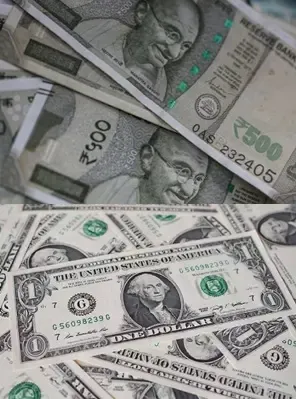How is RBI Strengthening Rupee Trade to Counter US Dollar Dominance?

Synopsis
Key Takeaways
- RBI promotes rupee internationalisation
- Reduced reliance on US dollar
- Trade-linked loans for neighboring countries
- Clear currency reference rates introduced
- Potential for economic interdependence
New Delhi, Oct 2 (NationPress) The Reserve Bank of India (RBI) has implemented strategies to enhance the internationalisation of the rupee, as announced on Wednesday. This initiative is designed to lessen the US dollar's stronghold in India's international trade and elevate the status of the Indian currency.
The RBI has granted dealer banks the authority to offer trade-linked loans in rupees to neighboring countries like Bhutan, Nepal, and Sri Lanka. This move aims to decrease dependence on the US dollar as a settlement currency. For nations like Sri Lanka, which has recently endured a severe financial crisis, this option for rupee-based borrowing alleviates the strain on foreign reserves. Furthermore, it establishes a consistent demand for the rupee in global markets, as highlighted in an article by India Narrative.
However, the article cautions that careful oversight will be essential, as there is a potential risk of borrower nations accumulating rupee debts that exceed their repayment capabilities, which could lead to economic tensions. Additionally, the success of these measures hinges on whether importers and exporters truly favor rupee-based contracts over traditional dollar invoicing.
The RBI's decision to provide clear reference rates not only for the US dollar, euro, yen, and sterling but also for currencies like the Indonesian rupiah and UAE dirham is viewed as a strategic move.
Indian exporters frequently face challenges with double conversions: billing in dollars, converting to rupees, and then converting again to the trading partner’s currency. Establishing predictable benchmarks can minimize currency conversion costs and risks, thereby making rupee invoicing more attractive.
This initiative aligns with India's larger goal of making rupee invoicing standard in energy transactions with the Middle East, especially considering the UAE's growing involvement in diversifying oil trade settlements away from the dollar.
Moreover, the article points out that allowing Special Rupee Vostro Account balances to be invested in corporate bonds and commercial papers can generate demand for rupee-denominated assets globally and help develop India’s corporate bond market, which is currently less mature than that of China.
Additionally, this can anchor surplus funds from Sri Lanka, Nepal, and other regional nations in India's financial markets, enhancing economic interdependence, as noted in the article.









